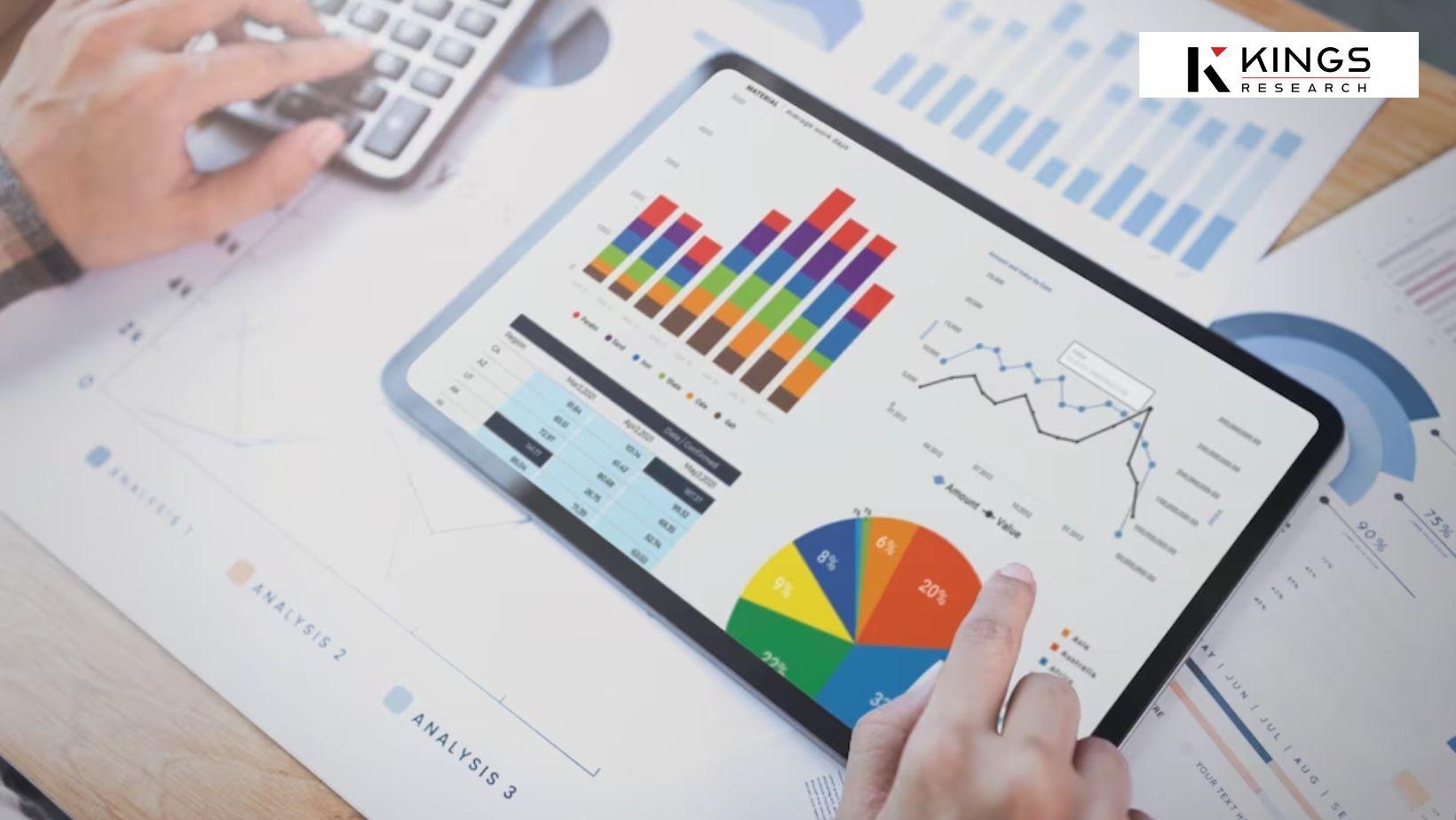Market Overview
Construction wearables are innovative devices designed to ensure safety and efficiency in challenging environments. These include smart helmets, connected vests, AR glasses, and wearable sensors. Their integration into construction operations minimizes risks, monitors worker health, and improves project timelines. Kings Research projects that the market for construction wearables will continue to expand, reflecting increased awareness and investments in workplace safety and digitization.
The global Construction Wearables Market size was valued at USD 4,211.6 million in 2023 and is projected to reach USD 8,444.7 million by 2031, growing at a CAGR of 9.22% from 2024 to 2031. In the scope of work, the report includes products offered by companies such as Ekso Bionics, Arm Limited, Panasonic, GERMAN BIONIC SYSTEMS GMBH, Wenco International Mining Systems Ltd., Proxgy, Trimble Inc., XREAL, Inc., RealWear Inc, SUITX by Ottobock and Others.
Increasing demand for enhanced productivity and efficiency in construction projects stems from the industry’s constant drive for optimization and profitability. With rising competition and project complexities, construction firms are pressured to deliver projects faster and more efficiently while maintaining quality standards. This demand is fueled by various factors, such as tight project schedules, labor shortages, and the need to meet client expectations within budget constraints.
The adoption of construction wearables is further supported by stringent occupational health and safety regulations worldwide. Employers are increasingly prioritizing technology-enabled solutions to mitigate risks, comply with safety standards, and enhance on-site productivity.
Emerging Trends in the Construction Wearables Market
Several transformative trends are shaping the construction wearables market:
- IoT-Integrated Wearables: Internet of Things (IoT) technology enables real-time monitoring of construction workers, providing data on vital signs, location, and environmental hazards.
- AR and VR Integration: Augmented Reality (AR) and Virtual Reality (VR) wearables are improving training modules and on-site project visualization, reducing human errors.
- Advanced Analytics: Data collected from wearable devices is analyzed to predict accidents, enhance workforce efficiency, and streamline resource allocation.
- Energy Efficiency: New-generation wearables are equipped with energy-efficient designs, including solar-powered systems, ensuring extended usability.
Market Dynamics
Drivers
- Rising Safety Concerns: High accident rates in construction highlight the need for proactive safety measures, fueling demand for wearables.
- Technological Advancements: Continuous innovation in sensor technology, connectivity, and AI applications enhances the appeal and functionality of construction wearables.
- Regulatory Support: Governments and industry bodies emphasize safety compliance, making wearables an essential component of construction site protocols.
Challenges
- High Initial Costs: The affordability of wearable technologies remains a barrier, particularly for small and medium enterprises.
- Resistance to Change: Traditional construction players often resist adopting modern technologies, preferring conventional practices.
Market Segmentation
Kings Research identifies key segments within the construction wearables market based on type, application, and end-users:
By Type
- Smart Helmets: These are equipped with sensors and communication tools to enhance safety and connectivity.
- Wearable Sensors: Used for monitoring workers’ vital signs, temperature, and fatigue levels.
- AR Glasses: Facilitate project visualization and precise execution.
By Application
- On-Site Safety Monitoring: Wearables aid in detecting environmental hazards and preventing workplace injuries.
- Operational Efficiency: Devices help streamline workflows, ensuring timely project completion.
By End-User
- Commercial Construction: Major users of wearables for safety compliance and efficiency.
- Industrial Construction: Growing adoption due to the hazardous nature of activities.
Key Players in the Market
The construction wearables market features a mix of established and emerging players. Leading companies include:
- DAQRI: Known for its advanced AR solutions for construction sites.
- Guardhat Inc.: Specializes in smart helmets and connectivity devices.
- Triax Technologies: Offers IoT-enabled wearables for worker tracking and safety.
- ProGlove: Manufactures ergonomic wearables that enhance productivity.
These players focus on innovation, partnerships, and acquisitions to strengthen their market position.
Recent Developments
- Product Launches: Companies are introducing cutting-edge wearables with enhanced connectivity, durability, and real-time analytics capabilities.
- Collaborations: Partnerships between wearable manufacturers and construction firms are driving tailored solutions for specific site needs.
- Research Investments: Market leaders are heavily investing in R&D to develop cost-effective and versatile products.
Regional Analysis
North America
The region holds the largest share of the construction wearables market, driven by strict safety regulations, technological adoption, and significant investment in infrastructure projects. The U.S. is a frontrunner, with construction firms actively embracing wearable technology.
Europe
Europe exhibits steady growth due to the increasing emphasis on workplace safety and eco-friendly wearables. Countries such as Germany, the UK, and France are adopting IoT-enabled solutions to enhance construction efficiency.
Asia-Pacific
The fastest-growing market, Asia-Pacific, benefits from rapid urbanization, infrastructure development, and increasing awareness of worker safety. Countries like China, India, and Japan are key contributors to regional growth.
Latin America and Middle East & Africa
These regions are witnessing gradual adoption, with governments and private firms recognizing the potential of wearables in mitigating construction risks.
Future Outlook
The construction wearables market is expected to witness exponential growth from 2024 to 2031, driven by technological advancements, regulatory compliance, and the industry’s digital transformation. Emerging economies will play a crucial role in expanding the market footprint as awareness and accessibility improve.
Industry players must focus on overcoming cost barriers and enhancing user-friendliness to capture untapped markets. As the construction industry evolves, wearables will remain integral to achieving smarter, safer, and more efficient operations.
For detailed insights and custom analysis, please contact- https://www.kingsresearch.com/construction-wearables-market-630
